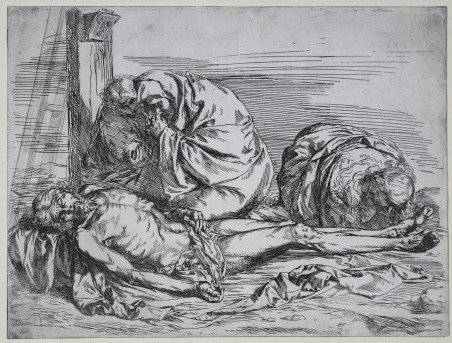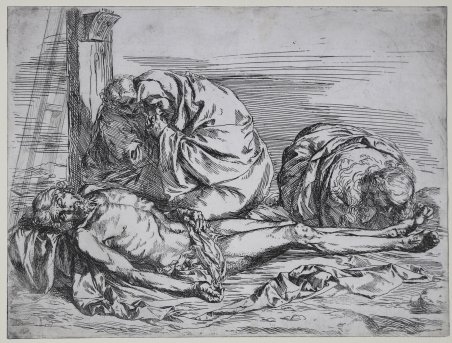Details
Engravers
RIBERA detto "lo Spagnoletto" Jusepe di (Jatiba circa 1590 -, Napoli 1652)
Description
Acquaforte e puntasecca, 1621 circa, con il monogramma non autografo in controparte in basso a sinistra. Esemplare nel terzo stato finale, con numerosi segni lungo la scala e sulla croce.Magnifico esemplare, con toni di lastra, impresso su carta vergata coeva, rifilato alla linea marginale, in ottimo stato di conservazione.Scrive S. Salamon “Questa acquaforte, piuttosto rigida, è stata da alcuni studiosi considerata di scuola, ma recentemente molte prove hanno portato al riconoscimento definitivo di questa stampa come opera autografa del Ribera; tra questi studiosi vi è anche Jonathan Brown che inizialmente l'aveva rifiutata. Tra queste argomentazioni, oltre a quelle stilistiche che pongono la stampa mediatamente successiva al San Sebastiano (cat. n. 1) e al San Bernardino da Siena (cat. n. 2), quindi agli esordi del Ribera incisore, si è scoperto il primo stato senza monogramma, il quale indicherebbe che la sua aggiunta è stata fatta solo per identificare l’opera. Si è scoperto anche un esemplare a Boston del San Gerolamo legge nel deserto (cat. n. 15) al cui verso è stampata una pallida impressione di questa stampa. Infine, la maggior parte delle impressioni sono delicate e ricche di tonalità (velo di inchiostro lasciato sulla lastra), come piaceva a Ribera” (cfr. Silverio Salamon, Jusepe De Ribeira. Lo Spagnoletto, Torino, 1998). //// Etching and drypoint, 1621 circa, with a false monogram GR in reverse added in the left lower corner. Example in the third final state, with numerous hatchings along the staircase and on the cross.Magnificent example, with plate tones, printed on contemporary laid paper, trimmed to the marginal line, in excellent condition.This etching is sometimes excluded from Ribera’s ouvre. Its relative coarseness suggested to August Mayer that it was reworked by a student, and it was later rejected by several sholars including, initially, Jonathan Brown. However, there is evidence in favor of its autograph status. The monogram in the lower left corner is false, but the existence of an impression in Rome (Gabinetto Nazionale), printed before it was added, suggests that its insertion was intended to identify the author of the work. Finally, an impression of “Saint Jerome Reading in Boston has a faint printing or maculatature of “The Lamentation” on the verso, which supports the attribution to Ribera. Giulio Mancini, in his treatise “Considerazioni sulla pittura” of 1620, mentions a “Christo Deposto” as a painting done by Ribera in Rome. Given the presumed early date of the etching, it may very well reflect this important lost painting (both The Lamentation now in Louvre and that in the National Gallery London, have been put forward as possibly the painting mentioned by Mancini). The composition of the print is closest to the painting now in London, which may be an early work but which shares characteristics with other works by Ribera of the same subject. TIB, 44.269.1; Brown 17, III/III; Bayer, 384.3.17; Pérez Sánchez – Spinosa (1992), n. 87.


Find out how to use
Find out how to use
